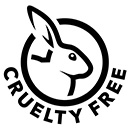Cosmetic Safety Assessment Advice

Because current EU legislation and the requirement for safety assessments (CPRS's) on cosmetic products has now been in existence for several years we have taken the opportunity to provide the following advice. We also provide various solutions to our customers' problems of having their own finished products properly and legally assessed so as they can be legally sold within the EU. We can provide our customers with various levels of assistance as follows...
1. Pre-assessed (Finished) products ready to sell straight away, manufactured by us, which do not therefore require further safety assessment, nor does it require the customer to keep their own Product Information File. The product should be batch labelled with the batch codes we supply with the product for traceability when selling under your own brand however.
These products can be found here: Finished Products
Please Note: Only our own finished products we make here in our workshop wouldn't need a safety assessment - If you buy our ingredients to make your own soap and toiletries, you would still need to have a Cosmetic Safety Assessment placed on your recipes
2. Affordable, limited, safety assessment packages (CPSR's) compliant with 2013 legislation developed in conjunction with an experienced industry provider which allow the small business/crafter to produce their own finished products using various 'packages' at affordable prices using a wide selection of products sourced from The Soap Kitchen and other EU based stockists.
3. Low Cost 'base product' linked safety assessment packages (CPSR's). Developed in conjunction with an experienced industry provider and specific to a limited selection of cosmetic bases from The Soap Kitchen which then have a precise and limited selection of additions specified. These are the lowest cost packages we have available and allow small businesses/crafters to produce finished products within limited parameters which can be packaged and marketed as their own.
4. Bespoke assessments, challenge testing, technical advice and on-going product support which is handled either by us or directly from our retained consultants.
For those of you reading this page for it's informational content about compliance with legislation, we have given below a basic summary of how to comply with legislation as it currently stands and what it requires you, as the manufacturer of your own products to be doing, in order to be able to legally sell your products within EU member states.
The manufacturer (you) should prepare a Product Information File (PIF) which should contain all information regarding manufacturing method, ingredients, MSDS for all ingredients, allergen information, labelling detail, batch records and traceability. This file should be kept available for viewing by anyone requesting so.
Batches... Each 'batch' of product should be issued with a batch number and have full ingredients and origin of ingredients record written and kept for scrutiny if required. Batch numbers should appear on any product labelling to ensure it can be accurately linked to the batch information for traceability purposes.
Labelling...all product labelling should comply with INCI legislation, which states that the INCI names for ingredients should be clear and legible either on the product itself, or where not appropriate, maybe because of size or where a product is offered unwrapped, should be clearly visible at the point of display or on any over-packaging such as outer boxes or wrap. Ingredients should use approved INCI names for each one. Ingredients should be listed in descending order of weight as they are included in the manufacture of the product and should use the INCI names for each ingredient used. For a guide to INCI terminology for common ingredients Click this link
Natural Soaps...for a naturally saponified soap, which would have oils and lye in manufacture, but would then not have any significant amounts of either oils nor lye remaining in the final product, the 'soap' ingredients are listed in approved terminology relating to the finished substances. E.G. Soap made from Olive Oil and Lye would be listed as 'Sodium Olivate'. There is no need to refer to oils as their INCI names nor to Lye (Sodium Hydroxide), as it is not present in the finished soap.
Ingredients of 1% or less concentration can appear in any order at the end of the ingredients.
Allergens (sensitisers)...certain allergens present in many essential oils and fragrance oils must be included in the INCI labelling in cases where they exceed 0.01% in rinse-off products (soaps, shampoos etc.) and in 0.001% in leave-on products (moisturising creams etc.).
Product labelling should also include a 'point of contact' address for the manufacturer (you).
As well as the PIF and Labelling issues, there is a legal requirement for the manufacturer (you) to hold a safety assessment (CPSR) for the products you are selling if selling within the EU. A CPSR should be carried out by a 'competent' person and in choosing this person or organisation you should ensure that they are experienced in all aspects of the products you intend to sell and that they are backed-up by their own Professional Indemnity Insurance, which will be your protection financially if there should be any litigation brought against you should anyone experience an adverse reaction to any of your products.
Once completed, your assessment is valid forever. It does not require annual renewal. (Subject to any future legislation changes introduced in the EU)
Under the 2013 Cosmetic Regulations, before you place the product on the UK or EU market, you should also upload details of the type of product you are supplying, together with your name, company and address details via the Cosmetic Product Notification Portal (CPNP). You are also advised to contact your local Trading Standards Office. Trading Standards can provide fuller information on the legislation and how to comply. Their services are FREE and their specific advice on labelling can be very useful.
THESE GUIDELINES ARE BASED UPON OUR OWN EXPERIENCES AND UNDERSTANDING OF THE LAW AS IT CURRENTLY STANDS IN THE U.K.







